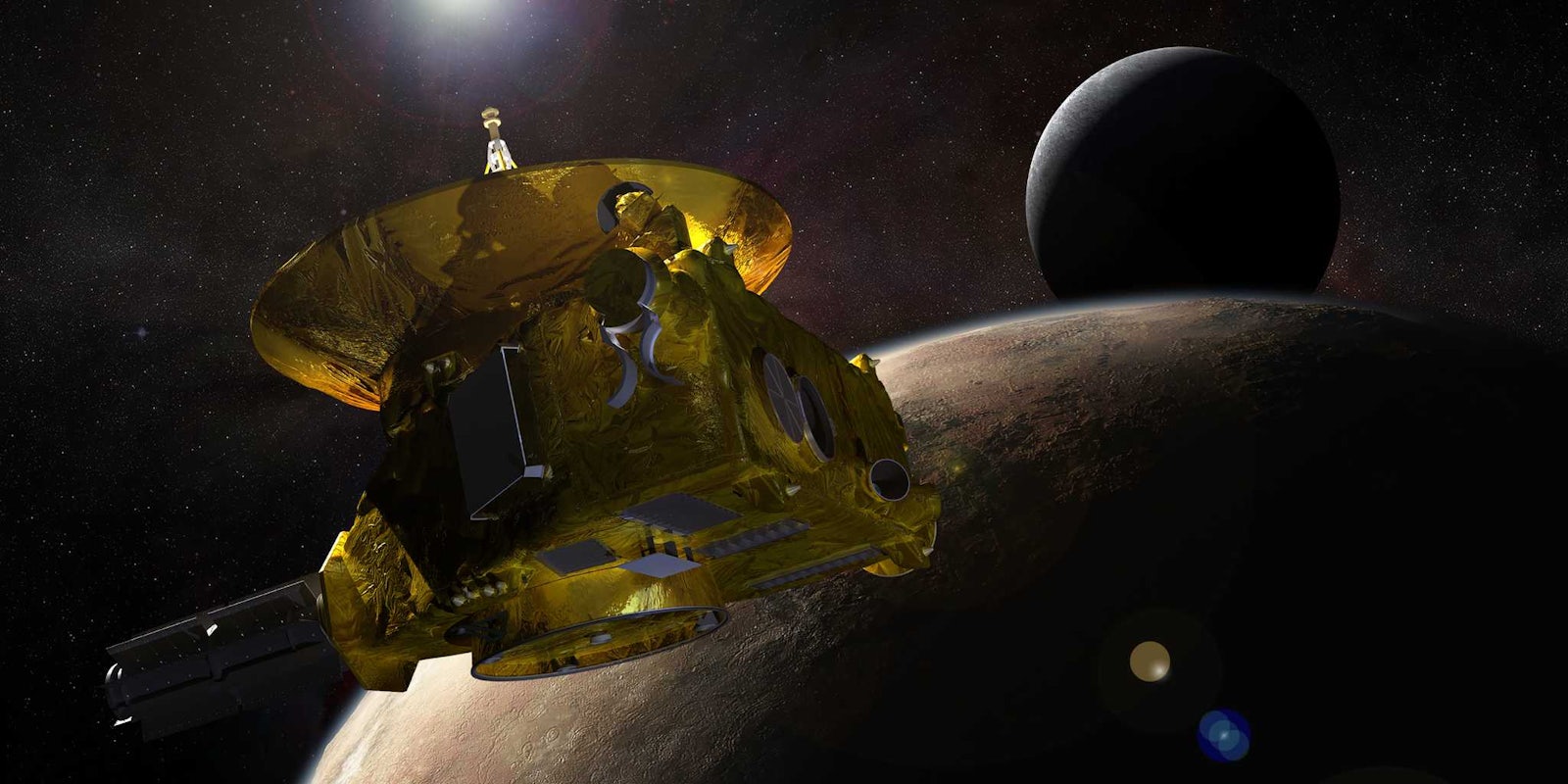NASA‘s New Horizons probe completed its nine-year journey to the dwarf planet Pluto on Tuesday morning, capping off a journey to what was once considered our solar system’s last planet and setting the stage for a flood of new data about the mysterious and distant world.
New Horizons blasted off from Earth in January 2006 to gather data about Pluto, its five moons, and other large objects in the Kuiper Belt. The probe reached its closest point to Pluto at 7:49am ET Tuesday, and it will now continue to speed through the outer reaches of the solar system indefinitely.
Beginning the #Pluto occultation measurements to get our best look at the atmosphere. #PlutoFlyby
— NASA New Horizons (@NASANewHorizons) July 14, 2015
New Horizons has given us the most conclusive images of Pluto ever seen, beginning with blurry photos earlier this year and culminating in gorgeous high-resolution pictures this week.
Because the probe cannot take and transmit photos at the same time, its first close-flyby images will not reach NASA until Wednesday afternoon. But NASA has already posted another beautifully detailed image taken just before the historic flyby.
Thanks to the difficulty of transmission and the 4.5-hour time delay between Pluto and Earth, we won’t know the probe’s true status until Wednesday. But for the time being, there is no reason to believe the mission was not successful. Over the coming weeks, New Horizons will continue to transmit photos and other data about Pluto and its moons.
It has been 46 years since Neil Armstrong set foot on the Moon and just 112 years since the Wright brothers flew their first functioning aircraft. As of this week, an Earth probe has visited each of what were once considered the nine planets of the solar system; the fact that one of them was downgraded to dwarf-planet status has not dampened NASA’s excitement at the prospect of analyzing it in what promises to be stunning detail.
Photo via NASA


